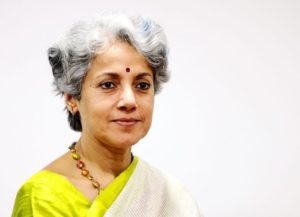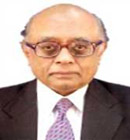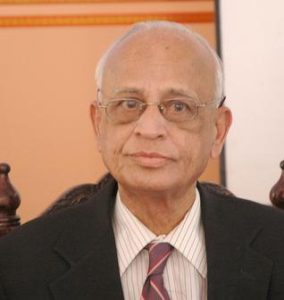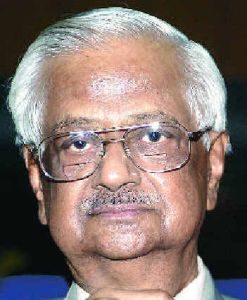Category Archives: Science
Clean Energy – K R Sridhar – Newyork Times

SUNNYVALE, Calif. — As a scientist working for NASA in the 1990s, K. R. Sridhar developed a contraption that could use energy from the sun to transform the elements of the Martian atmosphere into breathable air or propulsion fuel.
It passed all its tests, but a planned mission to send it to Mars in 2001 was canceled and Dr. Sridhar moved on, looking to apply what he had learned to help stem climate change on earth instead.
Dr Soumya Swaminathan – First Indian – WHO
 Dr Soumya Swaminathan, Director-General (DG) of the Indian Council of Medical Research (ICMR) and secretary, department of health research, is the first Indian to be appointed to the second highest position at the World Health Organization (WHO) in Geneva. Known in particular for her work on tuberculosis, Swaminathan will be taking over her new role as deputy DG, Programmes, at WHO within a few weeks. She spoke to Rohit E David on the challenges facing the world’s apex health body, the problems in Indian healthcare and India’s role in the global health architecture:
Dr Soumya Swaminathan, Director-General (DG) of the Indian Council of Medical Research (ICMR) and secretary, department of health research, is the first Indian to be appointed to the second highest position at the World Health Organization (WHO) in Geneva. Known in particular for her work on tuberculosis, Swaminathan will be taking over her new role as deputy DG, Programmes, at WHO within a few weeks. She spoke to Rohit E David on the challenges facing the world’s apex health body, the problems in Indian healthcare and India’s role in the global health architecture:
What are some of the challenges in front of you as WHO deputy DG?
First of all, the responsibility is huge. The work which WHO’s DG has given me as deputy DG, Programmes, means working across divisions of WHO. My job will be to achieve the goals he has laid out. I see it as a wonderful opportunity. I think I will be able to bring people together, synergise them and focus on some high impact programmes.
ISRO – Kasturirangan

Dr K. Kasturirangan, ISRO
If online energies could be harnessed, they’d be ballistic enough to propel a million rockets. But it does speak of a new buzz: discussions on Quora and elsewhere on how large “our”
Rajagopala Chidambaram – Man Behind India’s Atom Bomb

He was a key member of the core team that secretly designed India’s atom bomb. But ever since he took over as chairman of the Atomic Energy Commission in February 1993, Dr Rajagopala Chidambaram, 58, has strived to bring a new openness to India’s nuclear programme. Last fortnight, Features Editor Raj Chengappa interviewed him at his Bombay office overlooking the Gateway of India. Excerpts:
Q. How do you view the current US moves to push its non-proliferation policy in South Asia?
A. India has observed the longest moratorium on nuclear bomb explosions. So we don’t have to take lessons on morality from the US or anyone else. Everything that is being said now, including a comprehensive ban on tests, was propagated by India in the ’50s, which was 70,000 nuclear weapons earlier.
DR. K. S. KRISHNAN & Raman Effect

Calamur Mahadevan – Humane professor

He made significant contributions to the development of groundwater resources in the Telangana districts of the then Hyderabad State. The mineral surveys carried out by him formed the foundation for subsequent detailed investigations. A groundwater geologist, he made pioneering work in the tapping of groundwater potential of hard rock areas.
That was Calamur Mahadevan, a professor par excellence. He not only induced his students to work hard and aim high in life but also paid their tuition fee, whenever they faced financial difficulties. No wonder many of his students occupied top positions in India and abroad.
T.R. Govindachari – Organic chemist

CHENNAI, DEC.31 Prof. T.R. Govindachari, who died recently in Chennai, was an outstanding organic chemist and a multi-faceted personality. Born in Chennai in 1915, he completed his B.Sc degree in the Presidency College here. He worked under Prof. B.B. Dey for his M.Sc. and Ph.D degrees.
Popularly known as TRG, he went to the University of Illinois, U.S., for his post-doctoral fellowship, working under Prof. Roger Adams as a Government of Madras scholar.
Returning to India in 1949, he joined the Presidency College as an Additional Professor of Chemistry. He became Chief Professor in 1952 and Principal of the college in 1961. During these years, he built an active group of research scholars and carried out pioneering work in natural products chemistry focussing on Indian medicinal plants.
Dr. P. K. Iyengar – probing atoms with a Nobel laureate

n October 1994, following announcement of the Nobel Prize in physics, there was celebration at the Babha Atomic Research Centre at Trombay.
The scientists had gathered to cherish their long association with Prof. Bertram N. Brockhouse of McMaster University of Canada — who shared Nobel Prize with Prof. Clifford Shull of Massachusetts Institute of Technology (MIT), USA, that year, and to felicitate the Professor.
When Prof. Brockhouse began his experiments which eventually led to his winning the Nobel Prize, there was an Indian scientist beside him — Dr. P. K. Iyengar. (Mr. Iyengar died on Wednesday.)
Dr Raja Ramanna – Chairman, Atomic Energy Commission

While paying tribute to Dr. Homi Bhabha, Mr. J. R. D. Tata observed: “I believe that the greatest contribution Homi made to India’s development in to the modern state it is fast becoming, lies in training and bringing out to their full capability a host of young scientists and administrators who, today, lead so many of India’s scientific and technical establishments”.
Among the young scientists handpicked by Dr Bhabha, Dr. Ramanna stands out as a shining example. One of his earliest responsibilities was to organize the training programme at the Atomic Energy Establishment Trombay (AEET). Dr Ramanna proposed that the school may be called the Atomic Energy Establishment Trombay Training School (AEET TS).













